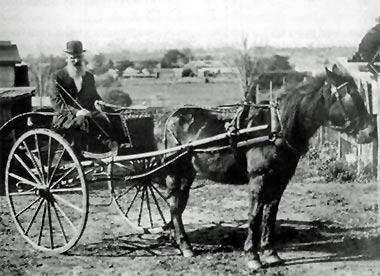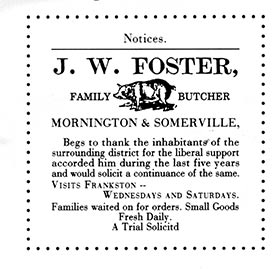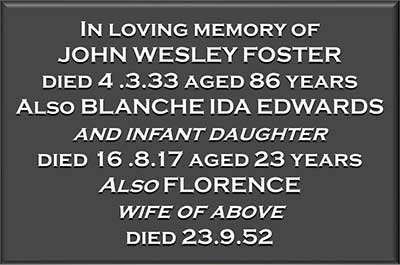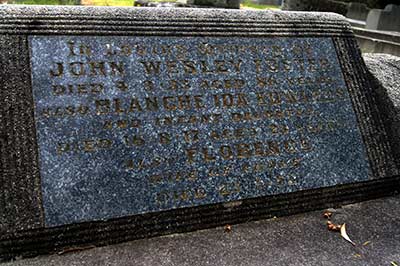John Wesley Foster
John Foster was the eighth child of Felix and Elizabeth Foster, and the first to be born in Australia. He was born at Brighton, Victoria, in 1845, after his parents had arrived in Melbourne in 1844, with their family of seven children.

Felix Foster – John’s brother
Photo from: "The Butcher, the Baker, the…" by Bruce Bennett, p.24
The family settled in Brighton and had another two children. On 6 June, 1882, John Foster married (Elizabeth) Florence Robinson, daughter of the late Hugh Robinson, Clerk in Holy Orders of Somerville.
John joined his brother Felix, a butcher in Somerville, and became a sheep farmer.
He was advertising as a butcher from 1885 onwards.

In 1895 he purchased the Somerville shop of E. Coxall, a Frankston Butcher.
John and Florence had five children, all born in Schnapper Point - Wesley (1883), Harry (1885), Rupert (1886), Florrie (1889) and Blanche (1899). They celebrated their 50th wedding anniversary at their home, "Linkfield", in Main Street Mornington, in 1932
John died in 1933, aged 86, and Florence in 1955, aged 89. Both are buried in the Mornington cemetery, with their youngest daughter Blanche, who sadly died in childbirth, at the age of 23.



Rupert Foster
Rupert Felix Foster, a farrier, joined the Australian Imperial Force on 17 March, 1915, and his brother, Harry George, a farmer, followed him on 5 July, 1915.
Rupert was 28 at that time and Harry, who had been farming in Rochester, was 30.
Rupert left Australia as part of the 22nd Infantry Battalion on board the HMAT Ulysses on 10 May, 1915 and Harry followed him on board the HMAT Honaria on 27 September and was taken on strength with the 1st Divisional Ammunition Column, in Cairo, in November, 1915.
Harry served with the 1st Field Artillery Brigade, and also the 24th Machine Gun Company.
In March 1916, he was appointed gunner, and he disembarked in Marseilles to join the B.E.F.
In one of his many letters home he reported on the locals who were fighting with him:
Have just been out with Gordon Croagh and Frank Garlick; the former only arrived this morning, so he is quite a stranger, but we are going to take him round. Have seen Joe Garlick, Tom Donnelly, Dick Marr, Sam Garlick, Albert James, J. and C. Burnell, and the two McIlroys, so I have plenty of company. There are a lot of Dromana, Sorrento and Somerville boys; it’s almost like being in the Point again. I think its time some more cold-footed ‘Pointers’ came along. If they only knew what a good time we are having they would all come . . . I met Arthur Kent who used to work at Bradford’s. Tom Donnelly is as fat as a seal!
In July 1917 Harry was wounded in Belgium with a gunshot wound to the side of the head and face, and was transferred to a London hospital.
He rejoined his unit, and served in France before suffering inflamed glands and was transferred back to hospital.
On 20 December, 1918, he returned home aboard the Orontes.
Harry was discharged in April, 1919, and went on to resume his occupation of farming at Rochester.
Rupert rose to the rank of Staff Sergeant, with the 14th Field Artillery Brigade.
After he was discharged in March, 1919, he opened a Blacksmith’s shop in Mornington, opposite the Sale yards, advising that he was "Late AIF 1915-1919."
